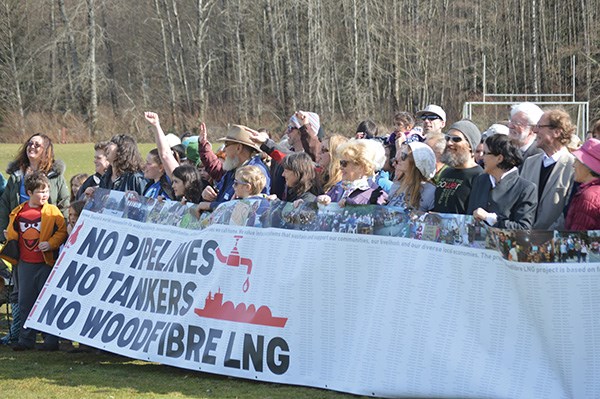In a recent post in The Squamish Chief, Woodfibre LNG’s VP Byng Giraud said he must “cut costs to make the business profitable.” The company website states that safety will come about through “Use of appropriate materials and compliance with industry and safety best practices” and “Proper engineering design of all onshore and floating facilities.”
Many wondered what the tradeoffs would be between safety and cost. Influential shipping magazine TradeWinds is reporting that Woodfibre plans “to use two elderly LNG carriers as floating storage units (FSUs)…. Two LNG carriers, the 126,300 m3 LNG Capricorn (built 1978) and LNG Taurus (built 1979), which were purchased by Singapore-based Nova Shipping & Logistics last year, have been widely rumoured to be earmarked for conversion into FSUs for the Woodfibre project. Both ships are currently laid up in Southeast Asia.”
What can possibly go wrong with using two “elderly” 285-metre-long, bolted-together vessels holding 120,000 tones of flammable fracked gas? Plenty!
These ships are old! Almost 40 years old, they are among the oldest 5 per cent of the world’s 400-plus LNG carriers and 3.5 times older than the fleet’s average age. In human terms, these ships are nearing 150 years old. If installed for the 25-year life of the plant, by 2045 they would be by far the oldest active LNG vessels ever.
LNG carriers have a 20-year design lifetime which factors the stress, metal fatigue and tank damage these ships endure from pounding waves (100 million of them over 20 years), sloshing cargoes, electrolytic thinning of the hull’s steel and rusting of key pumps and valves essential to keeping the vessel operating safely. If a spill were to happen – an accident or a terrorist attack on these “sitting ducks” – these tankers have no secondary containment. Like Chernobyl’s reactors and Lac-Mégantic rail cars.
SIGTTO (the LNG industry’s association) recommends that LNG facilities have tugs available 24/7 to help LNG tankers maneuver quickly away from the loading jetty (in case of spills, fires, forest fires, winds over 25 knots).
Two engine-less, bolted-together tankers with no crew aboard won’t be moved anywhere quickly.
Both vessels have had accidents. The LNG Taurus suffered severe hull damage in a grounding in Japan in 1980, while the LNG Capricorn had a fire in its #5 tank and hard-whacked a pier while docking. Taurus’s captain so feared the catastrophic rupture of the ship’s LNG tanks that he took his own life on the spot. His ghost is rumoured to haunt the Taurus!
Given this approach to cost reduction, it is cold comfort to contemplate the words of Woodfibre LNG’s Vice-President Byng Giraud – then (2013) VP of Imperial Metals’ Mount Polley Mine – who said, “There needs to be a public realization that the costs imposed on industry to remove extreme risks reducing a risk from one in 1,000 to one in 10,000 – comes with a price.” Indeed it does, as victims of disasters in Mount Polley, Lac-Mégantic, Halifax, Westray and Grassy Narrows can attest.
Eoin Finn
Research Director, My Sea to Sky
Bowyer Island



